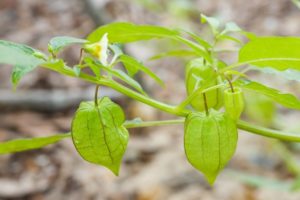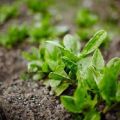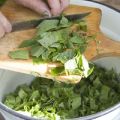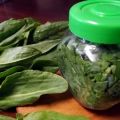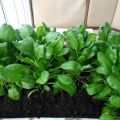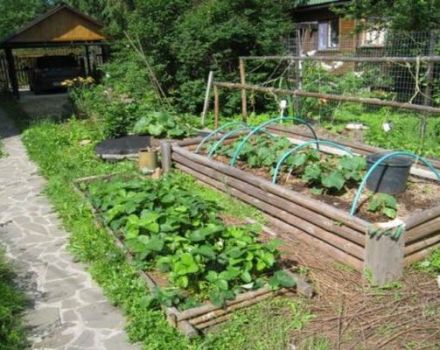The best varieties of sorrel for open ground, a description and which ones to grow in the Moscow region
Sorrel is a full-fledged vegetable garden crop with peculiarly shaped leaves and a persistent sour taste. It is used for making green borscht, added to pies and salads. There are many different types of sorrel: special varieties for Siberia, the middle lane, early ones - all this will be discussed in the material.
Sorrel varieties for open ground
All sorrel varieties grown by gardeners can be divided according to several main characteristics: for open ground, frost-resistant, decorative, radicular, according to the shape and color of the leaf, as well as hybrid (spinach and others).
Important. In addition, sorrel is classified as edible, eaten, and inedible. In Europe, the subalpine species is quite popular, specially designed for breeding on stones - its purpose is purely decorative.
Most species of modern sorrel, both early and mid-season, are intended for planting in a greenhouse, open ground.
Gardeners are well aware of the varieties:
- Belleville. Refers to medium early, with thick, medium length, roots. The taste of the leaves is moderately sour; they are large, round-elongated in this variety. Frost-resistant;
- Large-leaved. One of the early and at the same time high-yielding species, not afraid of cold weather, leaves are light, erect;
- Malachite. In terms of ripening, it is considered average, usually no more than 50 days pass from the appearance of shoots to the first harvest. The leaf resembles a spear in shape, the edges are slightly wavy, the taste is pleasant, with a slight sourness;
- Odessa 17 belongs to the early species, moreover, it is drought-resistant. The leaves are rounded, elongated, up to 7 centimeters wide;
- The broadleaf variety is distinguished by a delicate, medium acid taste, as well as an egg-shaped leaf;
- The spinach variety is distinguished by large, erect leaves of a rich dark color, with a slight acidity and a high content of vitamin C.

Description of sorrel varieties
Each species has its own characteristic features, sometimes the name indicates them (broadleaf, spinach or red), but most often small tips are needed - it will be much easier to deal with them.
Red sorrel
This type of sorrel, called Red and sometimes Bloody, has leaves of a characteristic rounded shape of a dark green color, with bright streaks of a rich crimson hue. The plant is perennial, it can grow to a height of 80 or even 120 centimeters. Loves the sun (slight shading is allowed), does not tolerate drought. Cuttings are red, in one place it can grow up to 5 years.
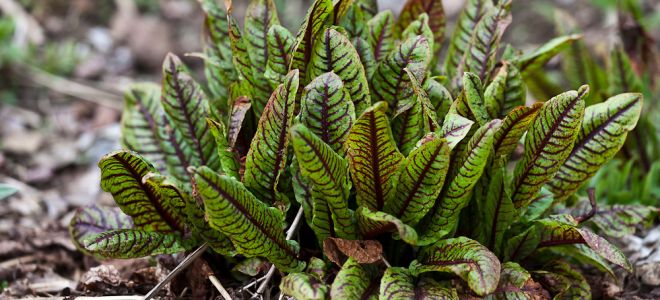
Large-leaved sorrel
The large-leaved variety has many advantages: gardeners appreciate it for early ripening (no more than 35 days), frost resistance (does not require shelter for wintering), good yield (up to 6 kilograms per square meter for 2 harvests). The leaves, as the name implies, are large, light green, elongated.
Rich in vitamins A, B, B2, C, PP, trace elements iron, potassium. It is used in first courses (soups, cabbage soup, borscht), when canning, has a pronounced sour taste. It grows up to 6 years without a transplant (subject to proper care).
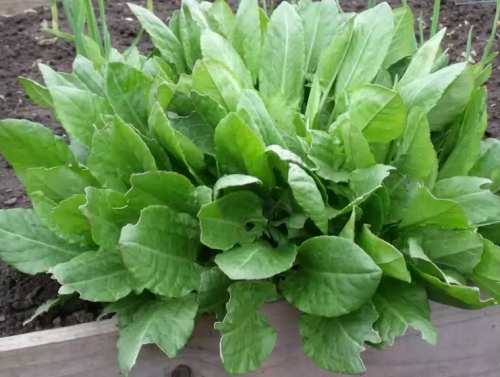
Broadleaf sorrel
The species has juicy bright emerald shoots with a moderately sour taste. It has an average germination rate, after 50 days you can harvest the first crop of greens (in total, up to 5 cuts per season are obtained from broad-leaved sorrel). The description of this variety is most often found on Internet pages and in catalogs. It is very popular with gardeners and is considered ideal for soups and first courses.
Spinach sorrel
Spinach is a hybrid variety with a very high protein content in its leaves - almost like soybeans. At the same time, it is completely devoid of the characteristic sour taste of other species (it does not contain oxalic acid), it is rich in trace elements of potassium, phosphorus, sulfur, iron.
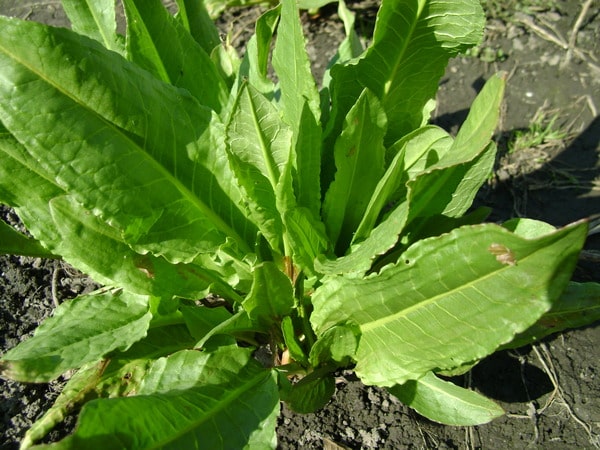
It remains to add to this one more undoubted advantage - the early ripening of leaves of the 1st collection, which is especially important for plants sown in open ground. Uteush (another name for this type) is useful for salads, vegetable purees, as a seasoning for meat.
Victoria - sorrel
Victoria belongs to late ripening varieties with dark green, slightly bubbly, rounded leaves. It is considered resistant to shooting, with a medium-sized rosette (up to 20 centimeters).
The best varieties for the Moscow region
At present, breeders have developed various varieties of sorrel, oriented to cultivation in specific regions of Russia, with certain climatic conditions: thermophilic, requiring additional care, or, conversely, frost-resistant, unpretentious.
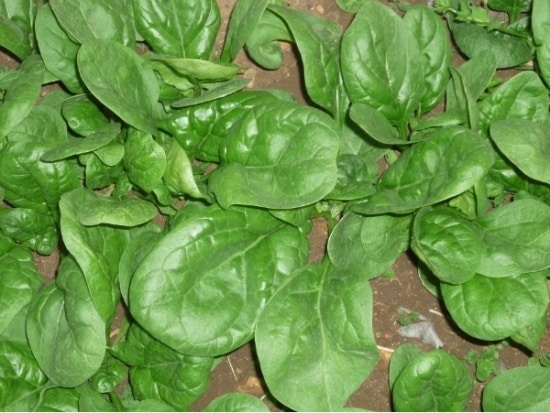
For the Moscow region, as for the pronounced Middle Lane, the following types are optimal:
- Belleville. One of the oldest species, in terms of its quality indicators, it is not inferior to the latest developments. The leaves have a high content of carotene, ascorbic acid, trace elements. Frost-resistant, fleshy leaves with thick stalks, suitable for preservation, eaten both fresh (salads, snacks) and boiled (soups, side dishes). In season, it gives at least 7 kilograms of fresh herbs per square meter of soil.
- Emerald snow. With medium germination (growing season - up to 52 days), but unusually productive. Allows sowing seeds all year round - in spring, late autumn (in winter) and summer. Easily recognizable by the wide, spreading shape of the leaf rosette. The leaves themselves are distinguished by a peculiar beauty - a rounded, egg-like shape; from one square meter, up to 7.5 kilograms of harvest are obtained. The taste is delicate, great for vegetable cuts and first courses, as well as pickles or freezing.
- Malachite. Resistant to low temperatures, it grows surprisingly quickly with bright green leaves. The period from sprouting to harvest is no more than 45 days - a record result. Leaves of medium length (up to 15 centimeters), form a slightly scattered rosette. The surface of the leaf is often smooth, but weakly pimpled forms are also found.
- Odessa broadleaf. The species is early ripe, the growing season is up to 45 days. Leaves are slightly elongated, up to 16 centimeters long and up to 7 centimeters wide, saturated green. High (up to 8 kilograms) yield directly depends on soil fertilization and plant nutrition. This type is great for salads and appetizers, soups and preparations. The leaves contain many vitamins, potassium and iron.
- Broadleaf.Recently, it has become very popular, it yields a crop in 40-45 days (up to 8 kilograms per square meter). The leaves are elongated, not too sour, suitable for salads. Susceptible to soil moisture, in drought it begins to shoot abundantly. The average growing period in one place is up to 5 years, the variety is resistant to low temperatures.
- Maikopsky 10 and Spinach are distinguished by low content of oxalic acid, early ripening, good tolerance to low temperatures
- Large-leaved. One of the best and earliest species, with acceptable frost resistance, mild (not too sour) taste, pleasant light green leaf color.
- Altai stands out with spear-shaped leaves on long and thin stems, as they mature, they acquire a slight reddish tint. Greens with a pleasant taste, medium acidity. Frost resistant.
- Lyons. Delicate, with unusually tasty leaves, a variety that can hardly endure the Russian winter. Leaves grow back quickly and densely, so they are cut several times during the season.
All the described sorrel varieties take root well in Russia, are bred with seeds and planted in open ground.With proper care, they bring up to 6 harvests of healthy, with pleasant sourness, greens on the table for salads, seasonings and first courses.
